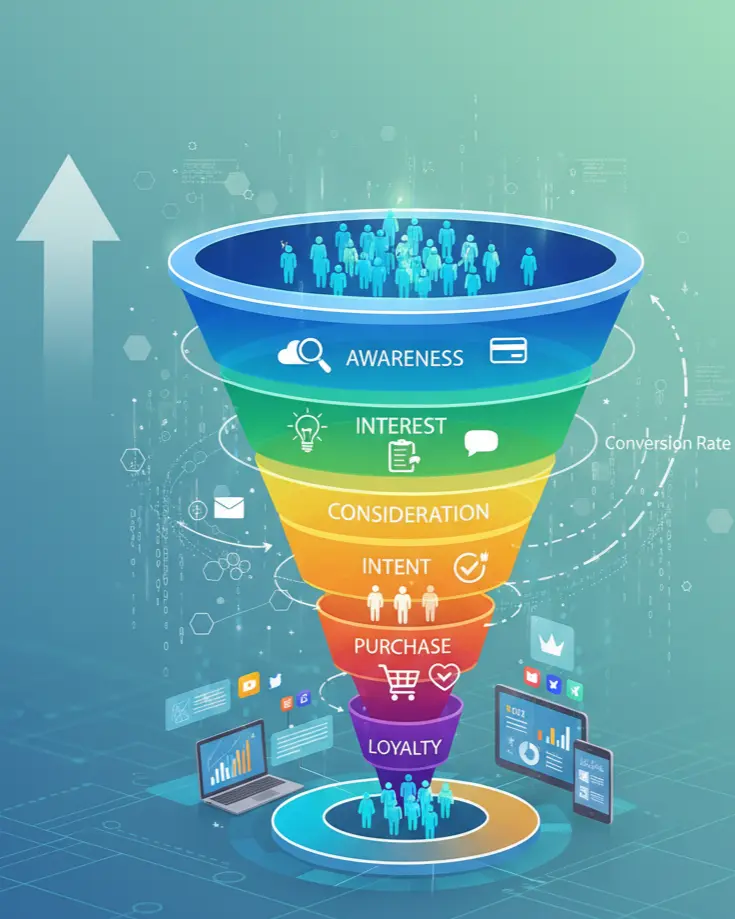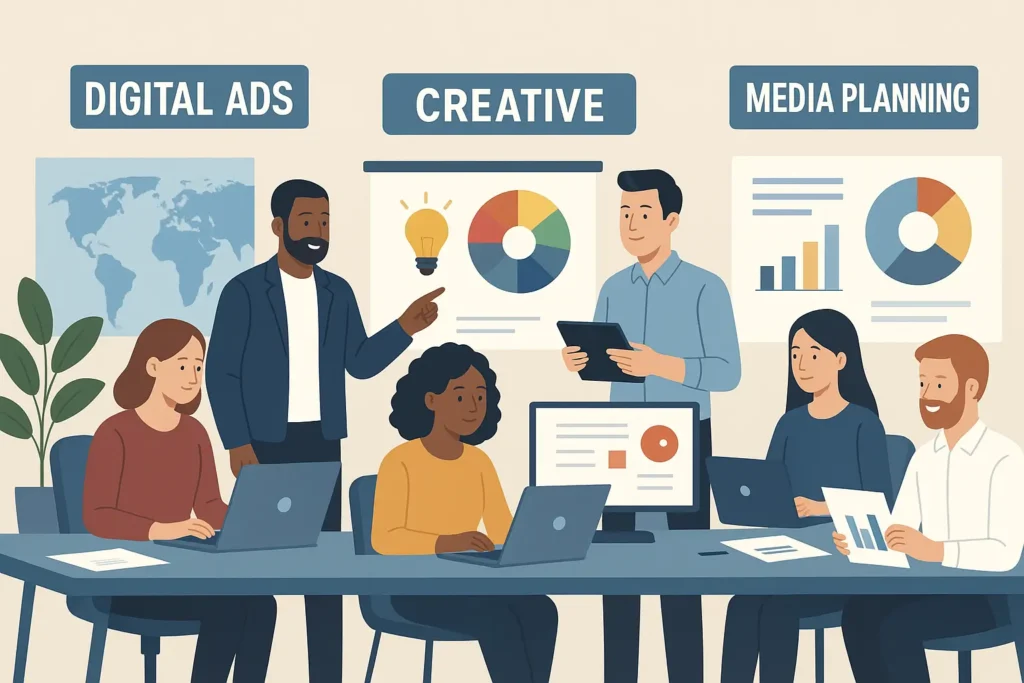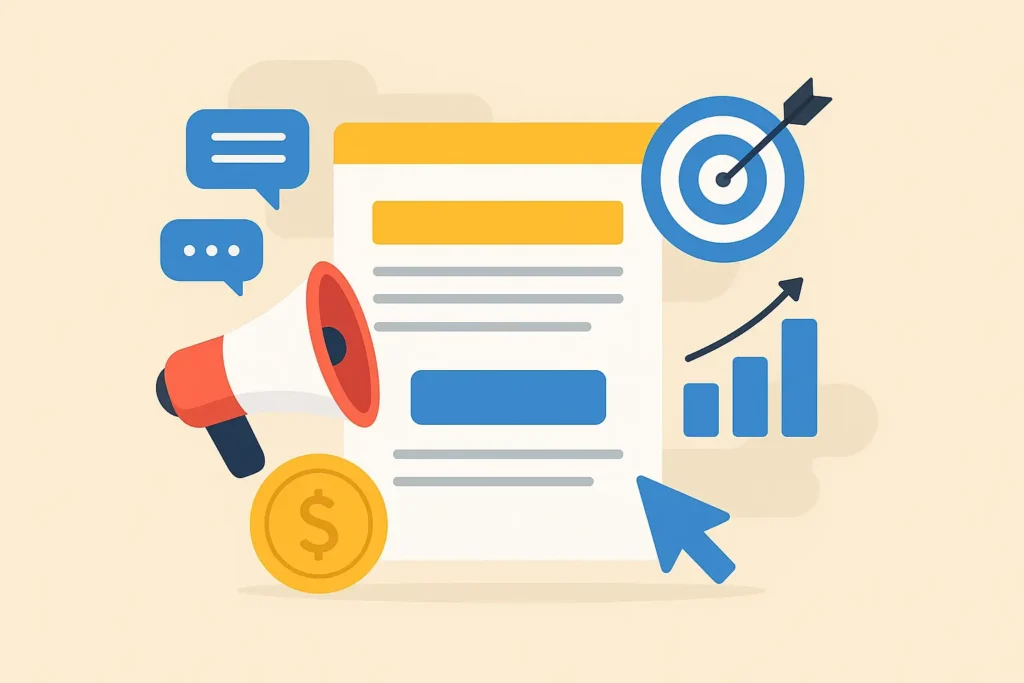are advertising and marketing the same thing?
The terms marketing and advertising are frequently used synonymously in today’s hectic corporate environment, but are they truly the same? Both are essential for establishing a brand and promoting company expansion, but they have different functions and work in different ways. By comprehending consumer demands, developing strategies, and creating long-term value, marketing establishes the groundwork. Contrarily, advertising is only one effective instrument in that strategy, which is centered on spreading messages, gaining awareness, and drawing attention. This blog examines how these two notions overlap and vary, as well as why recognizing the distinction can change the way organizations communicate with their customers. What is Advertising? Advertising is a type of sponsored communication that companies, brands, or people use to market goods, services, or concepts to a target market. Its primary goals are to draw attention, raise awareness, and influence people to perform a desired action, like buying something, registering, or remembering a brand. Here are the key elements of advertising: Paid Promotion: Advertisers pay for space or time on platforms like TV, social media, search engines, newspapers, billboards, etc. Targeted Messaging: The message is crafted specifically for a certain audience. Brand Visibility: It helps increase recognition and recall. Persuasion: Ads are designed to influence consumer choices and behaviour. Types of Advertising Traditional Advertising: These are the classic, offline forms of ads that have been used for decades. Television Advertising: Commercials aired on TV channels. Radio Advertising: Audio advertisements broadcast on radio stations. Print Advertising: Ads in newspapers, magazines, brochures, and flyers. Outdoor / Out-of-Home (OOH): Billboards, bus shelters, hoardings, transit ads, posters, etc. Direct Mail: Promotional letters, catalogues, and postcards sent to people’s homes. Digital Advertising: Any ad delivered through digital or online platforms. Social Media Ads: Paid promotions on Facebook, Instagram, LinkedIn, YouTube, etc. Search Engine Advertising (PPC): Google Ads, Bing Ads, sponsored search results. Display Advertising: Banner ads on websites and apps. Video Advertising: Ads on YouTube, OTT platforms, reels, and short-video apps. Email Advertising: Promotional emails sent to targeted subscribers. Mobile Advertising: In-app ads, SMS promotions, push notifications. Content-Based Advertising: Focuses on delivering valuable content that subtly promotes a brand. Native Advertising: Ads that blend naturally with website or app content (e.g., sponsored articles). Influencer Advertising: Brands partnering with influencers to promote products. Sponsored Content: Paid blogs, videos, or posts created for promotional purposes. Performance-Based Advertising: Payment depends on actions taken by the viewer. Affiliate Advertising: Paying affiliates a commission for each sale or lead. Cost-Per-Click (CPC) / Cost-Per-Action (CPA) Ads: Advertisers pay only when users click or complete an action. Experiential & Non-Traditional Advertising: Engages consumers through real-world interactions. Event Sponsorships: Branding at sports events, expos, concerts, etc. Guerilla Advertising: Creative, surprising, low-cost street or public ads. Ambient Advertising: Unique ads placed in unexpected locations (e.g., elevators, shopping carts). What is Marketing? Marketing is the strategic process of identifying client needs, offering value, and developing strong relationships to drive business growth. It includes everything a business does to determine its target market, create the best goods or services, communicate clearly, and provide a positive client experience. Market Research: Studying customer needs, preferences, competition, and trends. Product Development: Creating or improving products/services based on customer insights. Branding: Building a unique identity, tone, and perception. Pricing: Setting the right price based on value, costs, and market demand. Promotion: Communicating with customers through advertising, PR, social media, content, etc. Distribution: Ensuring the product reaches customers at the right place and time. Customer Relationship Management (CRM): Maintaining ongoing engagement and loyalty. Types of Marketing Digital Marketing: Marketing efforts that use online or electronic channels. Search Engine Optimization (SEO): Improving website visibility on search engines. Social Media Marketing (SMM): Promoting through platforms like Instagram, Facebook, LinkedIn, etc. Content Marketing: Creating blogs, videos, guides, and other valuable content to engage audiences. Email Marketing: Sending newsletters, offers, and updates to subscribers. Pay-Per-Click Marketing (PPC): Paid ads on Google, Bing, and social media platforms. Influencer Marketing: Partnering with creators or influencers to promote products. Affiliate Marketing: Rewards partners for bringing sales or leads. Video Marketing: Using videos, reels, and YouTube content to build brand engagement. Traditional Marketing: Offline marketing methods have been used for decades. Print Marketing: Newspapers, magazines, brochures, pamphlets. Broadcast Marketing: TV and radio promotions. Outdoor Marketing (OOH): Billboards, hoardings, posters, transit ads. Telemarketing: Phone calls to promote products/services. Direct Mail: Physical mailers, catalogues, and postcards. Content & Relationship-Based Marketing Content Marketing: Educating or informing customers through blogs, eBooks, videos, etc. Inbound Marketing: Attracting customers by offering valuable information instead of pushing ads. Relationship Marketing: Building long-term customer loyalty through personalized engagement. Brand Marketing: Strengthening brand identity, image, and emotional connection. Data-Driven & Performance Marketing Performance Marketing: Paying only for measurable outcomes (clicks, leads, sales). Data-Driven Marketing: Using customer data and analytics for targeted campaigns. Marketing Automation: Using tools to automate emails, workflows, and customer journeys. Growth Marketing: Experimentation-focused approach to rapidly scale a brand. Experiential & Field Marketing Event Marketing: Promoting through exhibitions, trade shows, and launches. Experiential Marketing: Real-life experiences that allow customers to engage with the brand. Guerilla Marketing: Creative, unconventional marketing stunts. Sampling/Field Marketing: Distributing samples in public places or stores. Niche & Specialized Marketing B2B Marketing: Targeting businesses instead of consumers. B2C Marketing: Targeting individual customers. Influencer Marketing: Leveraging trusted personalities to promote products. Seasonal Marketing: Campaigns tied to festivals, holidays, or seasons. Local Marketing: Targeting a specific geographic area. 4 Ps of Marketing The 4 Ps of Marketing, often known as the Marketing Mix, are the four essential components that organizations employ to effectively sell their products or services. They assist businesses in developing strategies that draw clients, add value, and maintain their competitiveness. Here’s a simple breakdown: Product: This describes what a company provides, whether it is a tangible good, a service, or a digital product. Features, quality, design, branding, packaging, and the value it offers the consumer are all included. Price: This is what customers pay for the goods. Production costs,
are advertising and marketing the same thing? Read More »










